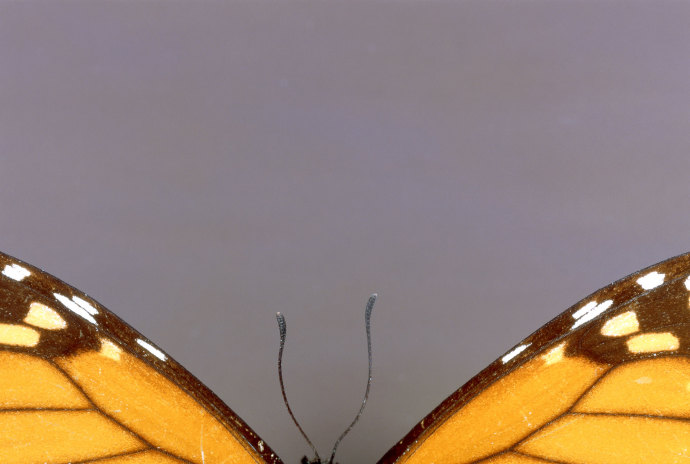
Barbara Kingsolver, Barack Obama, and the Monarch Butterfly
Back in February, the Obama Administration committed $3.2 million toward saving the monarch butterfly. Environmental activists, deeply concerned by the monarch’s alarming decline, applauded the move. The bookish among them may have also noticed a literary echo in the encouraging news: the totemic orange-and-black North American butterfly is the cause célèbre of Barbara Kingsolver’s 2012 novel, “Flight Behavior,” which happens to feature a tall, thin, Harvard-educated,
April 10, 2015 | Source: The New Yorker | by Nina Martyris
Back in February, the Obama Administration committed $3.2 million toward saving the monarch butterfly. Environmental activists, deeply concerned by the monarch’s alarming decline, applauded the move. The bookish among them may have also noticed a literary echo in the encouraging news: the totemic orange-and-black North American butterfly is the cause célèbre of Barbara Kingsolver’s 2012 novel, “Flight Behavior,” which happens to feature a tall, thin, Harvard-educated, African-American scientist named Ovid Byron, who bears a striking resemblance to the President, down to his inverted initials.
“I always hope for the best, in the department of life imitating art,” Kingsolver recently explained over e-mail. “And to help things along, I sent a copy of ‘Flight Behavior’ to Michelle Obama.” A farmer-novelist, Kingsolver lives with her family in a forest valley in Meadowview, Virginia, “surrounded by farms and by coal mines,” growing her own food and, like the protagonist of “Flight Behavior,” raising lambs. As for the resemblance between the President and her novel’s scientist hero, Kingsolver says that she had “completely constructed the character of Ovid” before the likeness struck her. “But,” she added, “I decided that would be fortuitous.”
In the book, Ovid Byron is a world-renowned entomologist who flies from New Mexico to Tennessee to study the huge flocks of monarchs that have suddenly shown up in a South Appalachian forest hollow, leaving the local population—rural, poor, and very religious—at once unnerved and amazed. Having never seen anything so spectacular as this orange rapture in the valley, the people of Feathertown are inclined to think of it as a “burning bush,” a miracle sent by God to light up their threadbare lives. The butterflies become a magnet, attracting television crews, day-trippers in S.U.V.s, and a lumpy group of knitters determined to immortalize the beauty of the butterflies with their needles and recycled orange wool.
But beauty can be deceptive: the butterflies are climate refugees. They have abandoned their flight path from Canada to their usual winter habitat, a sunny hillside in Mexico where they have been overwintering safely for generations but which has been ravaged by logging and landslides. Their mysterious flight behavior is a symptom of an overheated Earth, calving glaciers, and a disintegrating Arctic. This Appalachian roosting is fictional—the monarchs continue to overwinter in Mexico—but the mudslides and logging wrecking their habitat are not.
For the purposes of her plot, Kingsolver wrote that she needed a hero who would seem “extremely exotic” to the people of Feathertown. “Making him an African American would confound their expectation of scientific authority. And naturally, he had to be tall, dark and handsome.” While working on the book, Kingsolver took a vacation in the Virgin Islands and decided to give the character a Saint Thomas childhood—this explains why Ovid has a charming lilt quite different from the President’s clipped intonation. Otherwise, this forty-something, “six and a half feet tall, skinny as a rail” entomologist with “tiny corkscrews of grey in his short cropped hair,” whom one character describes as “African-American but not totally,” is a dead ringer for Obama. He has a tall, black, stylish wife; a smile that splits his face in two; and even the President’s mannerism of holding up “a long, narrow hand like a traffic cop.” The novel’s protagonist, Dellarobia Turnbow, a sarcastic sheep farmer’s wife who nurses a crush on the regal Ovid—his smile goes through her like “a hit of nicotine”—says he could be Barack Obama “traveling undercover” in a Volkswagen. When a kindergartener in the novel solemnly asks Ovid if he’s the President, he replies, laughing, “No I am not. What makes you think I might be the President? Is it because my skin is dark?”
I have been unable to discover whether Michelle Obama or her husband has read the novel, but the policymakers at the U.S. Fish and Wildlife Service are familiar with it. “I’m aware of the novel, but haven’t read it,” the director, Dan Ashe, who strongly believes that fiction and nonfiction can have a powerful influence on how we view the environment, said. “A generation ago, my brothers and I were mesmerized by a fictional account of resource depletion, starring Charlton Heston—‘Soylent Green,’ ” he said. He also cited Rachel Carson’s “Silent Spring” and Aldo Leopold’s “A Sand County Almanac.” “Kingsolver is clearly trying to awaken us to humanity’s growing disruption of the world’s biological functions—and to do it in a way that connects emotionally and viscerally with her readers,” Ashe said. “And we really need this awakening!”
